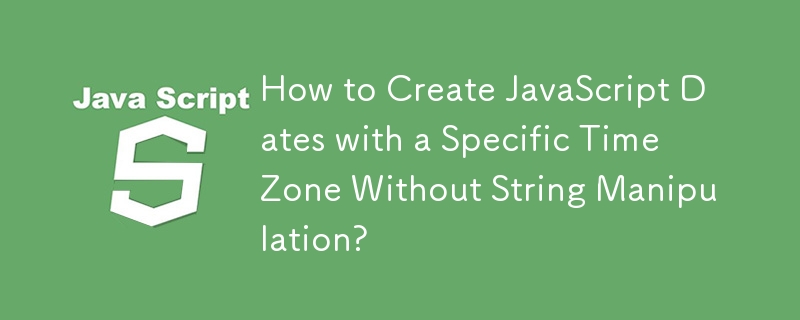Home >Web Front-end >JS Tutorial >How to Create JavaScript Dates with a Specific Time Zone Without String Manipulation?
How to Create JavaScript Dates with a Specific Time Zone Without String Manipulation?
- DDDOriginal
- 2024-12-27 22:43:14302browse

Creating Dates with a Specific Time Zone Without String Representation
When constructing a Date object using the JavaScript Date constructor, the resulting object will default to the current time zone, leading to potential discrepancies when serializing and deserializing dates between client and server. To address this issue, a better approach is to create dates with a specific time zone without resorting to using a string representation.
To achieve this, we can utilize the .setUTCHours() method. By setting the hours in UTC time, we can effectively create a Date object in the desired time zone. However, setting only the hours is insufficient. To obtain the correct date, we must also set the UTC date, month, and year.
For example:
const xiDate = new Date(); // Get the current date and time
const utcDate = new Date(
Date.UTC(
xiDate.getUTCFullYear(),
xiDate.getUTCMonth(),
xiDate.getUTCDate(),
xiDate.getUTCHours(), // Set the hours in UTC time
xiDate.getUTCMinutes(),
xiDate.getUTCSeconds()
)
);
Using this approach, we obtain a Date object in the desired time zone, ensuring consistency during serialization and deserialization.
The above is the detailed content of How to Create JavaScript Dates with a Specific Time Zone Without String Manipulation?. For more information, please follow other related articles on the PHP Chinese website!
Related articles
See more- An in-depth analysis of the Bootstrap list group component
- Detailed explanation of JavaScript function currying
- Complete example of JS password generation and strength detection (with demo source code download)
- Angularjs integrates WeChat UI (weui)
- How to quickly switch between Traditional Chinese and Simplified Chinese with JavaScript and the trick for websites to support switching between Simplified and Traditional Chinese_javascript skills

